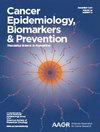Assessing Helicobacter Pylori Infections Among Adults From the Navajo Nation
IF 3.7
3区 医学
Q2 ONCOLOGY
引用次数: 0
Abstract
A substantial burden of stomach cancer continues to be observed in American Indians in the United States (US). The Navajo Nation, the largest American Indian tribe in the Southwestern US, is experiencing a higher incidence of stomach cancer compared to the general population in the region, possibly due to the high prevalence of Helicobacter pylori (H. pylori) infection, an infectious pathogen that colonizes the stomach and is a major risk factor for stomach cancer. To assess the prevalence, virulence, and risk factors for H. pylori infection in Navajo adults, we initiated a cross-sectional study in two geographic areas of the Navajo Nation. Study recruitment occurred from January to October 2021 during the COVID-19 pandemic. Participants were recruited using online and offline platforms, including social media, a study website, newspaper advertisements, flyers, word of mouth, and community outreach. Demographic, health, behavioral, environmental, and diet factors were assessed from health and food frequency questionnaires. H. pylori infection and cagA virulence were detected from stool samples by droplet digital PCR. Of 99 participants recruited, 56.6% (95% CI: 46.2–66.5) of participants were infected with H. pylori and, among H. pylori-infected participants, 78.6% (95% CI: 65.6–88.4) were infected with a cagA-positive H. pylori strain. Having a history of H. pylori infection was inversely associated with H. pylori infection (OR = 0.05, 95% CI: 0.01–0.34, P = 0.005), and using Navajo herbal medicine once a month was positively associated with H. pylori infection (OR = 7.28, 95% CI: 1.40–61.12, P = 0.03). No significant associations were observed with other risk factors (e.g., older age, males, lower education levels, smoking, alcohol use, and high sodium intake). The prevalence of H. pylori infection was two times higher in adults in the Navajo ABID study compared to the US population (27% seroprevalence), and the prevalence of the cagA gene in H. pylori-infected participants was four times higher than the US population cagA gene prevalence in White people (19% seroprevalence). These findings provide a greater understanding of the burden of H. pylori and cagA-positive infections and can inform prevention strategies to reduce H. pylori infections in the Navajo Nat.评估纳瓦霍部落成年人的幽门螺旋杆菌感染情况
据观察,美国印第安人患胃癌的比例仍然很高。纳瓦霍部落是美国西南部最大的美国印第安人部落,该部落的胃癌发病率高于该地区的一般人群,这可能是由于幽门螺杆菌(H. pylori)感染的高发病率造成的,幽门螺杆菌是一种定植于胃部的传染性病原体,是胃癌的主要风险因素。为了评估纳瓦霍成年人幽门螺杆菌感染的流行率、毒力和风险因素,我们在纳瓦霍民族的两个地区启动了一项横断面研究。研究招募于 2021 年 1 月至 10 月 COVID-19 大流行期间进行。我们利用在线和离线平台招募参与者,包括社交媒体、研究网站、报纸广告、传单、口口相传和社区宣传。通过健康和食物频率问卷对人口、健康、行为、环境和饮食因素进行了评估。通过液滴数字 PCR 技术从粪便样本中检测幽门螺杆菌感染和 cagA 毒力。在招募的 99 名参与者中,56.6%(95% CI:46.2-66.5)的参与者感染了幽门螺杆菌,在感染幽门螺杆菌的参与者中,78.6%(95% CI:65.6-88.4)的参与者感染了 cagA 阳性的幽门螺杆菌菌株。有幽门螺杆菌感染史与幽门螺杆菌感染成反比(OR = 0.05,95% CI:0.01-0.34,P = 0.005),每月使用一次纳瓦霍草药与幽门螺杆菌感染成正比(OR = 7.28,95% CI:1.40-61.12,P = 0.03)。与其他风险因素(如年龄较大、男性、教育水平较低、吸烟、饮酒和高钠摄入)没有明显关联。在纳瓦霍 ABID 研究中,成人幽门螺杆菌感染率是美国人口(血清流行率 27%)的两倍,幽门螺杆菌感染者的 cagA 基因流行率是美国人口中白人 cagA 基因流行率(血清流行率 19%)的四倍。这些发现使人们对幽门螺杆菌和 cagA 阳性感染的负担有了更深入的了解,并为减少纳瓦霍纳特地区幽门螺杆菌感染的预防策略提供了参考。
本文章由计算机程序翻译,如有差异,请以英文原文为准。
求助全文
约1分钟内获得全文
求助全文
来源期刊

Cancer Epidemiology Biomarkers & Prevention
医学-公共卫生、环境卫生与职业卫生
CiteScore
6.50
自引率
2.60%
发文量
538
审稿时长
1.6 months
期刊介绍:
Cancer Epidemiology, Biomarkers & Prevention publishes original peer-reviewed, population-based research on cancer etiology, prevention, surveillance, and survivorship. The following topics are of special interest: descriptive, analytical, and molecular epidemiology; biomarkers including assay development, validation, and application; chemoprevention and other types of prevention research in the context of descriptive and observational studies; the role of behavioral factors in cancer etiology and prevention; survivorship studies; risk factors; implementation science and cancer care delivery; and the science of cancer health disparities. Besides welcoming manuscripts that address individual subjects in any of the relevant disciplines, CEBP editors encourage the submission of manuscripts with a transdisciplinary approach.
 求助内容:
求助内容: 应助结果提醒方式:
应助结果提醒方式:


